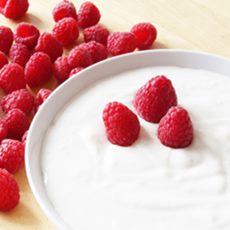Oats: uses and health benefits
Fiber for your health
Fact Checked
×All the content published in our website is fact checked to validate its accuracy.
Visit our guidelines web page to learn more about our strict processes regarding how we review our content's sources: reliable and reputable journals, media websites, universities, colleges, organizations, and professionals.
Our articles are based on scientific evidence, and the references are included in their footnotes, which are clickable links to sound scientific papers.
First published: 01. Jan.2025
Overview
Oats are rich in soluble and insoluble fiber, but it is the soluble beta-glucan fiber that gives oats their cardiovascular protective properties by lowering cholesterol, blood pressure, insulin resistance, and blood sugar levels. It prevents diabetes and may confer protection against colorectal cancer. It is an aid for digestive issues like Inflammatory Bowel Disease, ulcerative colitis, and constipation.
Its antioxidant and anti-inflammatory properties modulate the gut microbiome and help treat skin disorders.
This article explores its benefits, uses, and types (rolled, steel cut, instant, and milk) as well as its use by those who suffer from celiac disease.
References and Further Reading
(1) Paudel D, Dhungana B, Caffe M, Krishnan P., (2021). A Review of Health-Beneficial Properties of Oats. Foods. 2021 Oct 26;10(11):2591. doi: 10.3390/foods10112591. PMID: 34828872
(2) Marinus J.M. Smulders, et al., (2018). Oats in healthy gluten-free and regular diets: A perspective. Food Research International, Vol 110, pp 3-10,ISSN 0963-9969, https://doi.org/10.1016/j.foodres.2017.11.031.
(3) Thies F, Masson LF, Boffetta P, Kris-Etherton P., (2014). Oats and bowel disease: a systematic literature review. Br J Nutr. 2014 Oct;112 Suppl 2:S31-43. doi: 10.1017/S0007114514002293. PMID: 25267242
(4) Kim SJ, Jung CW, Anh NH, Kim SW, Park S, Kwon SW, Lee SJ, (2021). Effects of Oats (Avena sativa L.) on Inflammation: A Systematic Review and Meta-Analysis of Randomized Controlled Trials. Front Nutr. 2021 Aug 27;8:722866. doi: 10.3389/fnut.2021.722866. PMID: 34513905
(5) Victoria Chen,et al., (2022). Effect of oats and oat ß-glucan on glycemic control in diabetes: a systematic review and meta-analysis of randomized controlled trials. BMJ Open Diabetes Research & Care 2022;10:e002784.
(6) Rasane P, Jha A, Sabikhi L, Kumar A, Unnikrishnan VS., (2015). Nutritional advantages of oats and opportunities for its processing as value added foods - a review. J Food Sci Technol. 2015 Feb;52(2):662-75. doi: 10.1007/s13197-013-1072-1. Epub 2013 Jun 25. PMID: 25694675
(7) Kim IS, Hwang CW, Yang WS, Kim CH., (2021). Multiple Antioxidative and Bioactive Molecules of Oats (Avena sativa L.) in Human Health. Antioxidants (Basel). 2021 Sep 13;10(9):1454. doi: 10.3390/antiox10091454. PMID: 34573086
(8) Yu Y, Li X, Zhang J, Li X, Wang J, Sun B., (2023). Oat milk analogue versus traditional milk: Comprehensive evaluation of scientific evidence for processing techniques and health effects. Food Chem X. 2023 Sep 3;19:100859. doi: 10.1016/j.fochx.2023.100859. PMID: 37780279
(9) Ma Y, Hu M, Zhou L, Ling S, Li Y, Kong B, Huang P., (2018). Dietary fiber intake and risks of proximal and distal colon cancers: A meta-analysis. Medicine (Baltimore). 2018 Sep;97(36):e11678. doi: 10.1097/MD.0000000000011678. PMID: 30200062
(10) Yang J, Wang P, Wu W, Zhao Y, Idehen E, Sang S., (2016). Steroidal Saponins in Oat Bran. J Agric Food Chem. 2016 Feb 24;64(7):1549-56. doi: 10.1021/acs.jafc.5b06071. Epub 2016 Feb 15. PMID: 26852819
(11) Cortijo-Alfonso, ME., Romero, MP., Macia, A. et al., (2024). Effect of Barley and Oat Consumption on Immune System, Inflammation and Gut Microbiota: A Systematic Review of Randomized Controlled Trials. Curr Nutr Rep 13, 582–597 (2024). https://doi.org/10.1007/s13668-024-00543-x
(12) Cebolla A, Moreno ML, Coto L, Sousa C., (2018). Gluten Immunogenic Peptides as Standard for the Evaluation of Potential Harmful Prolamin Content in Food and Human Specimen. Nutrients. 2018 Dec 5;10(12):1927. doi: 10.3390/nu10121927. PMID: 30563126
About this Article
Oats: uses and health benefits, A. Whittall
©2025 Fit-and-Well.com. First Published: 01.Jan.2025. Update scheduled for 01.Jan.2028. https://www.fit-and-well.com/diet-food/oats-uses-benefits.html
Tags: oats, diabetes, cancer, colorectal cancer, milk, vegan, cholesterol, heart, constipation, fiber, digestion, skin, obesity, IBS (Irritable Bowel Syndrome), UC (Ulcerative Colitis), celiac disease





